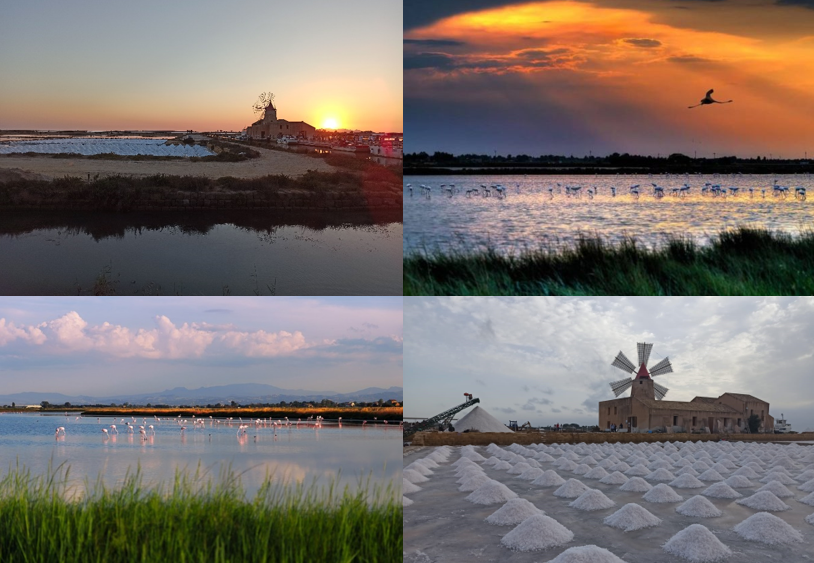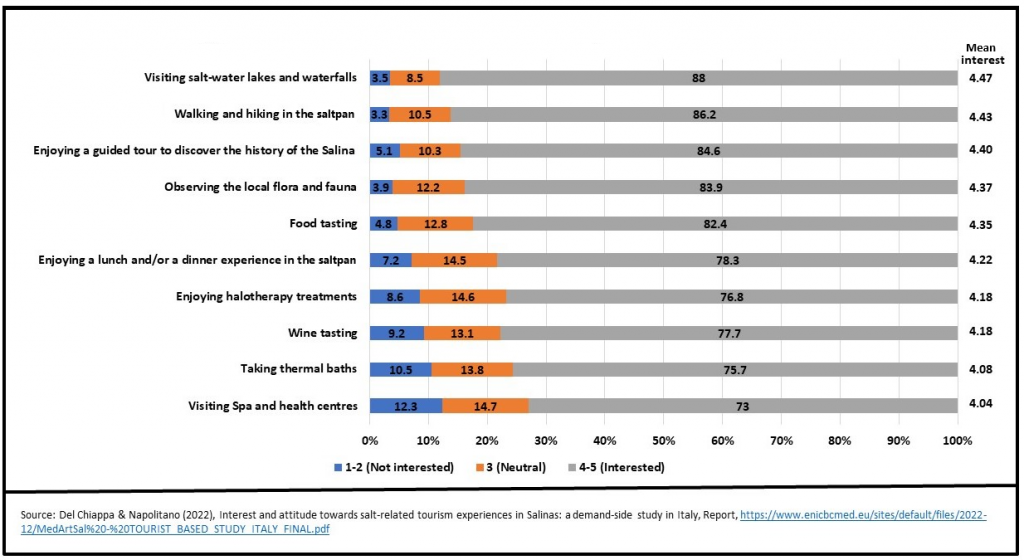A MedArtSal survey to rank the most attractive activities for tourists in Italian saltpans

Since the 1950s, artisanal salt production as decreased continuously, thus urging saltpans to identify new business strategies which guarantee the sustainability of their business. ‘Sustainability’ is considered in this case not only on an economic level (i.e., sustaining revenues, competitiveness and preserving job opportunities), but also environmental (preserving the biodiversity and the landscape of the saltpans) and socio-cultural (preserving the local industrial heritage and the local production, enhancing the community’s quality of life and well-being).
To develop a more innovative offer and implement a diversification strategy aimed at recovering their profitability and competitiveness, saltpans are making their mark in tourism by repackaging their supply and related value proposition to include a vast array of tourism-related activities and experiences (from educational workshops, to guided tours of production facilities, salt harvesting workshops, tastings, etc.) and ultimately enable their positioning in the domestic and international tourist markets. Even though salt tourism could be a promising tourism niche, there is still limited knowledge about the preferred activities which tourists would wish to undertake and experience when visiting a saltpan. This knowledge would be beneficial to support saltpans in planning and implementing their experience design and in promoting their offer.
With the aim of exploring potential areas for development in the touristic supply of saltpans, a specific survey was carried out in MedArtSal, by combining the on-field experience of the project pilots’ actions with tangible results of a focused territorial marketing research.
Under the supervision of Prof. Giacomo Del Chiappa (University of Sassari), Scientific coordinator of MedArtSal WP “Sustainable Tourism and territorial marketing”, and Dr. Ester Napolitano (CUEIM), 947 Italians were surveyed to assess the extent to which they would be interested in visiting saltpans and to rank a list of 43 different tourism-related activities and experiences.
Their responses were captured on a 5-point Likert scale ranging from 1 (not interested at all) to 5 (extremely interested). The ten most preferred activities were, in decreasing order:
- Visiting salt-water lakes and waterfalls;
- Walking and hiking in a saltpan;
- Enjoying a guided tour to discover the history of the saltpan and the way salt is extracted and treated;
- Going around the saltpan to observe the local flora and fauna;
- Food tasting;
- Enjoying a lunch and or a dinner experience in the saltpan;
- Enjoying halotherapy treatments;
- Wine tasting;
- Taking thermal baths;
- Visiting Spa and health centres.

The full research report can be downloaded at the following link: https://www.enicbcmed.eu/sites/default/files/2022-12/MedArtSal%20-%20TOURIST_BASED_STUDY_ITALY_FINAL.pdf
As already confirmed by the results of the MedArtSal pilot actions – a thorough consideration of the specific features of each saltpan, identification of a clear target audience and prioritizing the most urgent actions are key steps before the manager of a saltpan can engage in the process of diversifying activities towards tourism. In this sense, the MedArtSal experience shows that all these actions can only be successful by following a systemic approach, were all the relevant actors (saltpan managers, workers, local communities, touristic operators, public authorities) can be involved in a synergic way.







